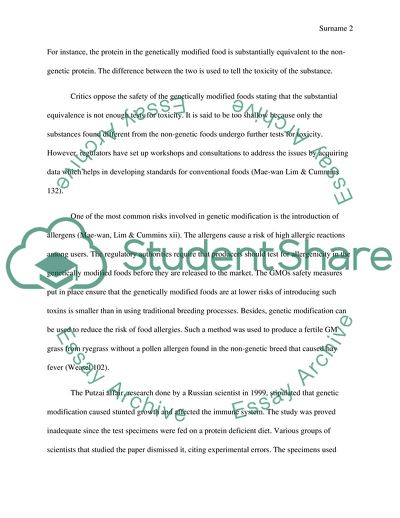Cite this document
(The Controversies Surrounding Genetically Modified Organisms Essay Example | Topics and Well Written Essays - 1250 words - 2, n.d.)
The Controversies Surrounding Genetically Modified Organisms Essay Example | Topics and Well Written Essays - 1250 words - 2. https://studentshare.org/biology/1826362-persuasive-essay
The Controversies Surrounding Genetically Modified Organisms Essay Example | Topics and Well Written Essays - 1250 words - 2. https://studentshare.org/biology/1826362-persuasive-essay
(The Controversies Surrounding Genetically Modified Organisms Essay Example | Topics and Well Written Essays - 1250 Words - 2)
The Controversies Surrounding Genetically Modified Organisms Essay Example | Topics and Well Written Essays - 1250 Words - 2. https://studentshare.org/biology/1826362-persuasive-essay.
The Controversies Surrounding Genetically Modified Organisms Essay Example | Topics and Well Written Essays - 1250 Words - 2. https://studentshare.org/biology/1826362-persuasive-essay.
“The Controversies Surrounding Genetically Modified Organisms Essay Example | Topics and Well Written Essays - 1250 Words - 2”. https://studentshare.org/biology/1826362-persuasive-essay.


